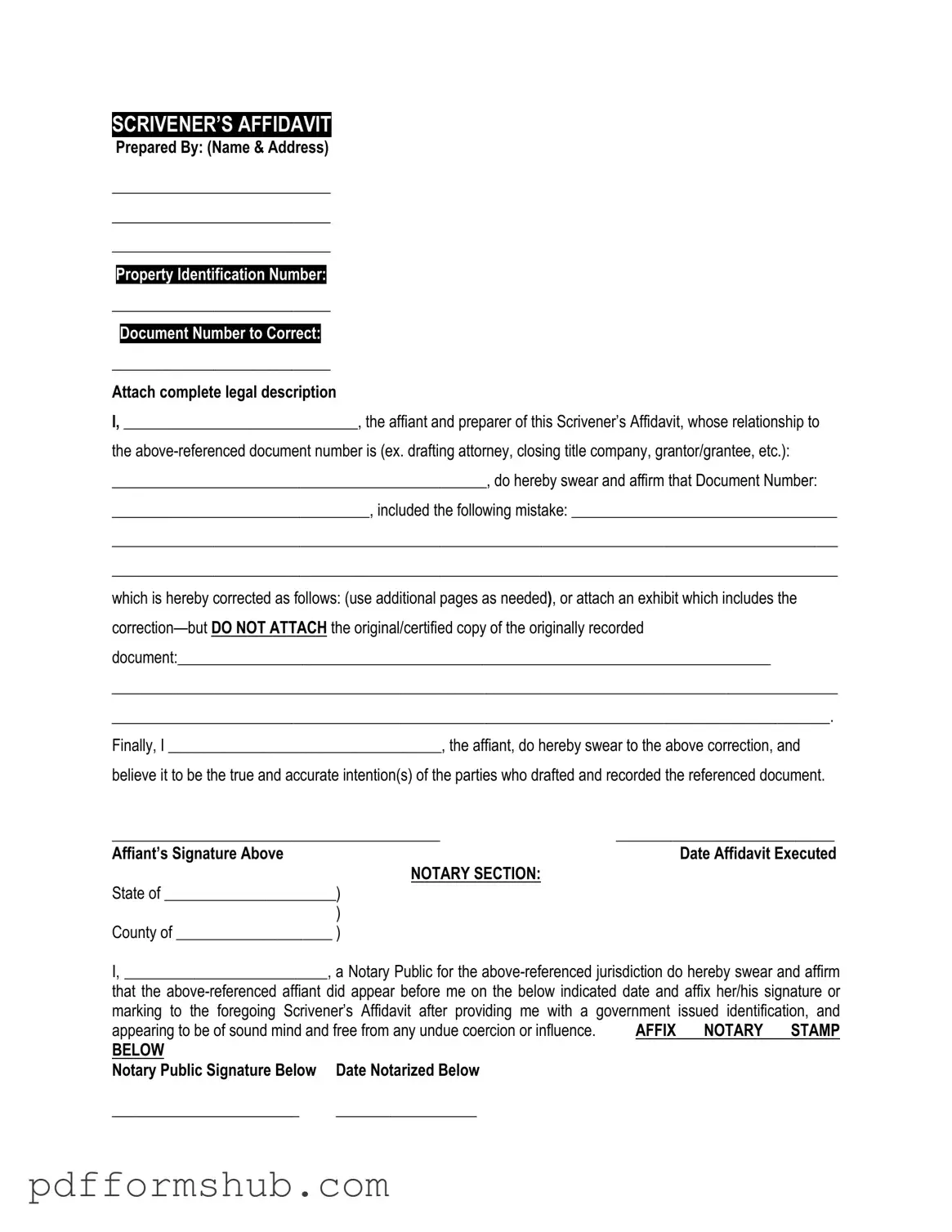The Scrivener's Affidavit is an essential document often utilized in real estate transactions and other legal matters to clarify the intent of the parties involved. This form serves to affirm that a written instrument, such as a deed or contract, has been accurately prepared and reflects the true intentions of the signatories. By including details such as the names of the parties, the date of execution, and a description of the property or subject matter, the affidavit provides a clear and concise account of the circumstances surrounding the document's creation. Additionally, it is typically signed by a scrivener, or the person who drafted the document, who attests to its authenticity and correctness. This affidavit can help resolve disputes and prevent misunderstandings by establishing a record that can be referenced in the future. In situations where a document may be challenged or questioned, the Scrivener's Affidavit acts as a safeguard, reinforcing the validity of the original paperwork. Understanding the implications and proper use of this form is crucial for anyone involved in legal transactions.
